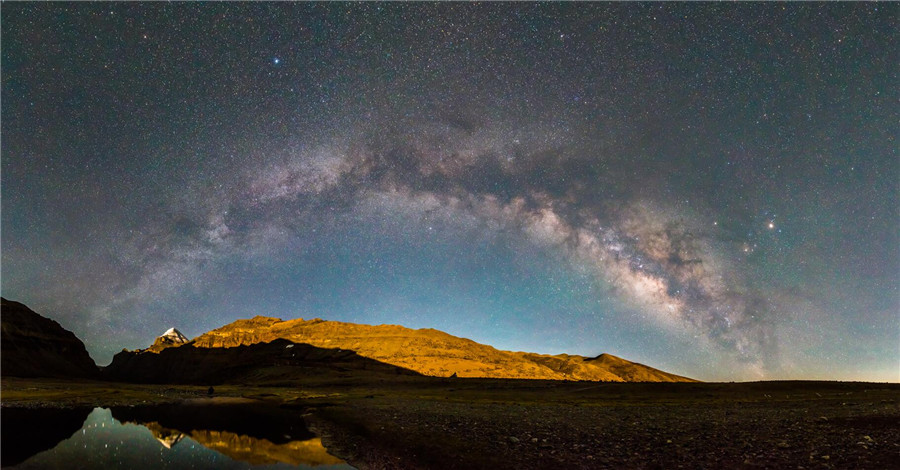 |
|
A Milky Way arch over Kangrinboqe Peak. The peak is said to be the center of the world in Buddhism. [Photo/Xinhua] |
It brought back childhood memories of lying in his grandma's arms looking at stars over the wheat fields in his hometown in East China's Shandong province.
"In my hometown, economic growth has improved living standards, but brought serious pollution. It's hard to see stars there now."
He began driving to dark places on clear nights to enjoy the splendor of the stars and had the idea to add astronomical aspects to his tours. "If tourists from economically developed regions enjoy the starry nights of Tibet, that's great."
He teaches the tourists how to recognize the constellations, take photos of the Milky Way, and tells the stories behind the stars.
He and his partners also run a small astronomy-themed hotel in Lhasa, capital of Tibet. Guests can observe the moon and planets through telescopes on the roof terrace.
Kou Wen, a senior engineer with the Beijing Planetarium, helped Xiao Bei to promote astronomy activities in Tibet. He says Tibet, with its high altitude, beautiful scenery, lack of air and light pollution, is an international attraction for stargazers.
As Chinese become richer and can afford high-end cameras and astronomical equipment, stargazing has grown in popularity, Kou says.
Traditionally, only high-ranking monks in Tibet were qualified to study astronomy. They believed that celestial bodies had mysterious influences on the earth. These were revealed through observing the stars.
Xiao Bei's activities also attract ordinary Tibetans. Once he set up a telescope near his home and was soon surrounded by dozens of people who were surprised to see the moon through the telescope.